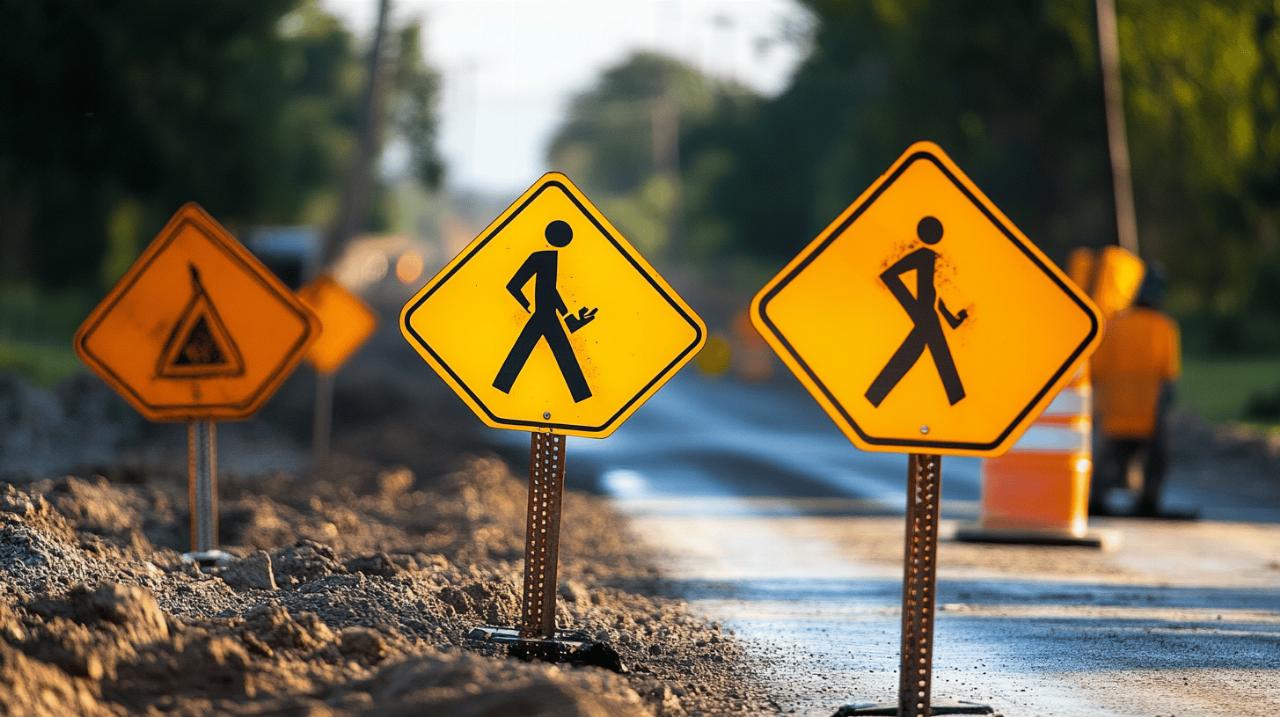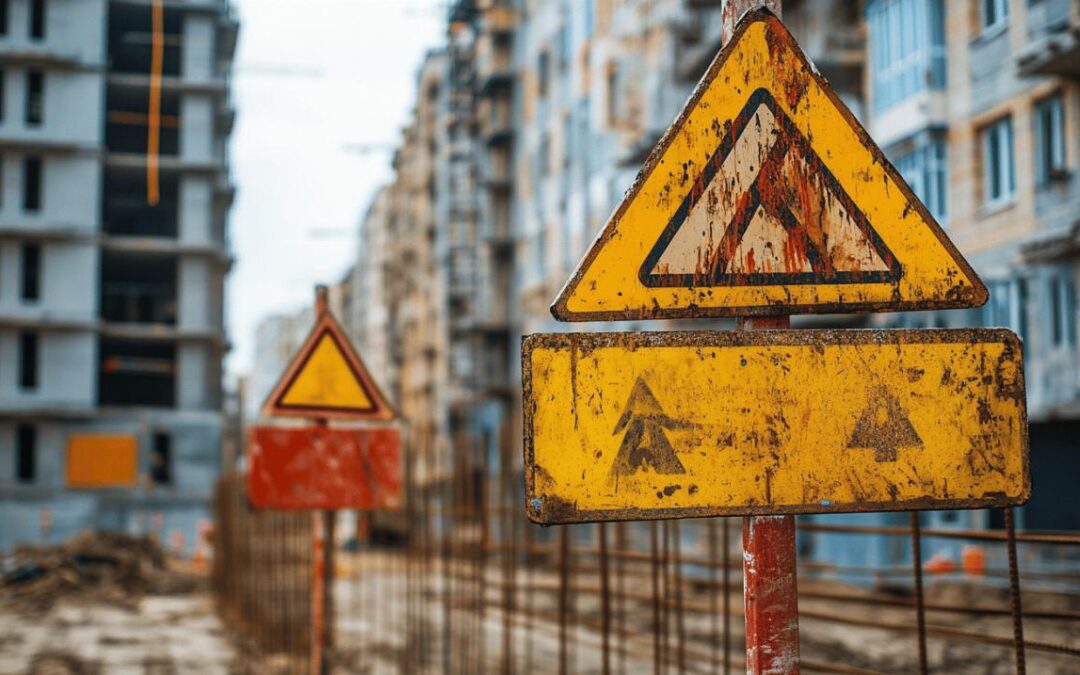Construction sites are inherently hazardous environments where clear communication can make the difference between safety and serious incidents. Effective signage serves as a critical tool for managing these risks, guiding workers and visitors alike. Well-designed construction site signs not only fulfil legal obligations but also protect everyone on site by clearly communicating potential dangers and required actions. This comprehensive guide explores how to create impactful construction signage that enhances safety and compliance.
Creating clear and legible signage
The foundation of effective construction site signage lies in its legibility. Even the most important safety message becomes worthless if people cannot read or comprehend it quickly. Professional sign designers recommend using straightforward typefaces such as Arial or Helvetica that maintain clarity even when viewed from a distance. Text size matters tremendously—letters should be large enough to read from the intended viewing distance, with a general rule of 25mm letter height for every 7.5 metres of viewing distance. Many construction managers find resources and guidance at https://www.criterioselecta.it/ when researching best practices for their signage solutions across various construction applications.
Selecting the Right Typefaces and Font Sizes
Font selection significantly impacts how quickly information can be processed by viewers. Sans-serif fonts generally offer superior legibility for safety signage compared to decorative or script typefaces. The construction industry standard leans toward bold, clean fonts that remain readable in varying weather and lighting conditions. Experts recommend maintaining consistent typography throughout all site signage to establish visual continuity that helps workers quickly recognise and process safety information without unnecessary cognitive effort.
Balancing text and visual elements
Effective construction signs strike the right balance between textual information and visual elements. Industry best practices suggest limiting text to just 3-5 words whenever possible, focusing on the essential message. This approach prevents cognitive overload, allowing for quicker comprehension, particularly in emergency situations. Visual hierarchy should guide the viewer’s attention to the most critical information first, with secondary details presented in a logical flow. White space serves as an often-overlooked design element—construction signage professionals recommend maintaining 30-40% empty space to enhance readability and prevent visual clutter.
Optimising visibility and placement
Even the most well-designed sign fails if it cannot be seen. Strategic placement and visibility considerations should drive decisions about where to position construction signage for maximum effectiveness. Signs should be mounted at eye level whenever possible, typically between 1.4 and 1.7 metres from the ground, depending on the specific viewing context. For sites with vehicular traffic, signs need positioning that accounts for driver sightlines and appropriate stopping distances.
Choosing high-contrast colour combinations
Colour selection plays a crucial role in sign visibility and meaning. The Health and Safety Regulations in the UK mandate specific colour coding for different types of safety messages. Red circular signs indicate prohibitions, blue circles denote mandatory actions, yellow triangles warn of hazards, and green squares show emergency information or safe conditions. Beyond these requirements, high contrast between text and background dramatically improves legibility—black text on a yellow background offers one of the highest visibility combinations, particularly in low-light conditions. Construction safety experts advise against using colour combinations that might be difficult for colour-blind individuals to distinguish.
Strategic positioning for maximum impact
Sign placement requires thoughtful planning based on traffic flow, visibility obstacles, and hazard proximity. Warning signs should appear before the hazard they indicate, giving workers sufficient time to process the information and take appropriate action. Entry points to construction sites demand comprehensive signage that clearly communicates site rules, personal protective equipment requirements, and visitor protocols. Regular walkthrough assessments help identify blind spots or areas where signs may become obstructed by construction activities, equipment, or materials.
Using universal symbols and pictograms
In diverse construction environments where multiple languages may be spoken, visual communication becomes essential. Universal symbols and pictograms transcend language barriers, instantly conveying critical safety information. The British Standard BS EN ISO 7010 establishes standardised safety symbols that construction sites should implement consistently to ensure universal understanding. 
Standard safety icons and their meanings
Standardised safety icons have established meanings that should be maintained across all construction signage. For example, a figure wearing a hard hat indicates mandatory head protection, while a lightning bolt warns of electrical hazards. These symbols have undergone extensive testing to ensure they communicate effectively across cultural and linguistic backgrounds. When implementing these icons, construction safety managers should ensure they conform exactly to the standards to avoid any misinterpretation that could lead to safety incidents.
Combining Symbols with Text for Better Communication
While symbols alone can convey basic messages, combining them with text creates the most effective communication strategy. This dual-coding approach reinforces the message through multiple cognitive channels, improving comprehension and retention. For sites with multilingual workforces, this approach becomes particularly valuable. The text can appear in multiple languages if necessary, but the universal symbol ensures that even those who cannot read any of the provided languages can understand the core safety message.
Ensuring durability and maintenance
Construction sites present challenging environments for signage, with exposure to weather, dust, and potential physical damage. Investing in durable materials and establishing maintenance protocols ensures signs remain effective throughout the project lifecycle. Regular inspection and cleaning of signage should be integrated into site safety management procedures.
Weather-resistant materials and construction
Material selection significantly impacts sign longevity and performance. For outdoor construction environments, UV-resistant inks prevent fading, while lamination or protective coatings defend against moisture damage. Aluminium composite panels offer an excellent balance of durability and weight for most construction applications. For temporary signage, corrugated plastic provides cost-effective weather resistance. In high-wind areas, signs require proper reinforcement and mounting systems to prevent becoming hazardous projectiles during storms.
Establishing regular inspection routines
Even the most durable signs require regular inspection and maintenance. Construction site managers should implement scheduled sign checks as part of overall safety protocols. These inspections should verify that signs remain visible, legible, and properly secured. Any damaged or faded signage requires immediate replacement to maintain safety standards. Cleaning schedules should account for environmental factors—sites with heavy dust or mud may require more frequent sign cleaning to maintain visibility.
Prioritising critical safety information
Not all safety information carries equal weight, and effective signage systems reflect this reality through thoughtful information hierarchy. Critical warnings about immediate dangers should receive visual prominence through size, placement, and design elements that draw attention. Construction signage should guide viewers toward the most urgent information first, with supporting details following in logical sequence.
Hierarchy of warning messages
Construction safety professionals recognise different levels of hazard severity and design signage accordingly. Danger signs indicate immediate, serious threats that could result in death or severe injury. Warning signs alert to potential hazards that could cause injury but present less immediate risk. Caution signs highlight situations requiring awareness but presenting lower risk levels. This graduated approach helps workers prioritise their attention and response to various site conditions, focusing first on the most serious threats to safety.
Legal requirements for construction signage
In the UK, construction site signage must comply with the Health and Safety (Safety Signs and Signals) Regulations 1996. These regulations mandate specific designs, colours, and applications for safety signs. Compliance involves more than simply posting required signs—it demands strategic implementation based on thorough risk assessment. Site managers must document this risk assessment process and their signage implementation plan to demonstrate regulatory compliance. Beyond basic compliance, best practices suggest exceeding minimum requirements in areas with heightened risk or complex operations.
Enhancing night visibility
Many construction projects continue during evening hours or in locations with limited natural light. Effective night-time signage requires special consideration of materials and illumination to maintain safety communication around the clock. Proper planning for low-light conditions prevents accidents and keeps workers informed regardless of time or weather conditions.
Reflective materials and their applications
Reflective materials dramatically improve sign visibility in low-light conditions by returning light from headlamps or torches toward the viewer. Different grades of reflective sheeting suit various applications, from basic engineering grade for general information to high-intensity prismatic materials for critical safety warnings. These materials prove particularly valuable for perimeter signage, vehicle traffic areas, and emergency information that might need to be located during power outages or other low-visibility situations.
Illuminated signs for 24-hour operations
For construction sites with continuous operations, internally or externally illuminated signs provide consistent visibility regardless of lighting conditions. LED illumination offers energy-efficient, long-lasting performance for critical signage areas such as emergency exits, first aid stations, and major hazard warnings. Solar-powered options provide illumination solutions for remote areas without readily available power. When implementing illuminated signage, construction safety managers should ensure backup power systems maintain critical safety communications during outages.






